我要这个 - A Foreigner’s Experience of Food in China
此文由Alice Reynolds提供 (查看原文)
After my diet for my first few days in China consisted mostly of 奶茶 (milk tea) and whatever vegetarian meal I managed to order (usually not inspiring enough to warrant eating a great deal of), I was hopeful that my time in China would result in losing a bit of weight.

Spoiler, this definitely did not happen as it did not take long for me to find the most amazing meals from both the campus canteen and nearby restaurants. The lack of a kitchen and ridiculously cheap prices, meant that for the entire four and a half months, I ate out twice a day for no more than £5 a day, and it was amazing! (Unfortunately, I do not have pictures of everything that I ate in China since I had not expected that I would not have the opportunity to take a photo of some of my favourites before the end of the year, whilst some photos are only on my memory card that is still in Shanghai – RIP).
Most significantly, my vegetarianism didn’t last long and I ate A LOT of meat in China (no bat I promise). This started before the end of my first week at my first ever (first of many) Japanese BBQ where the prospect of only eating mushrooms all evening did not appeal at all. The meat was insane, so much so that Caitlin (diehard vegetarian of 7 years and my worst critic every time I ate meat back in England) declared the beef to be the best thing she had ever eaten. That evening lead me to make the decision that I would eat meat every now and then, but only when the vegetarian option either didn’t exist or was decidedly grim. This mentality however got a bit out of hand as I began to eat more than my fair share of pasta carbonara and pepperoni pizza when there were obviously more than enough vegetarian options on the menu at Pizza Hut. Since I’ve been home, my vegetarianism has got back on track and I’ve only had a single sausage sandwich (my well known, all-time weakness so it doesn’t count anyway).

One of the first vegetarian (probably – content of broth was undetermined) dishes that I actually enjoyed is pictured below. The street directly outside the international dorms was full of small Chinese restaurants with almost identical picture menus in the window, choosing any of them for dinner was always sure to be a good choice. The dish in question was served in two separate bowls, one containing noodles and a fried egg and the other a broth. In my initial 外国人 (foreigner) naivety I assumed that the broth needed to be added to the larger bowl. It was delicious – but judging from the fact that the broth barely fitted in the larger bowl and the looks I got from other diners, this was definitely not the customary method of consumption. Despite having the meal at least once a week, none of the on-looking locals were ever tempted to try my creation.
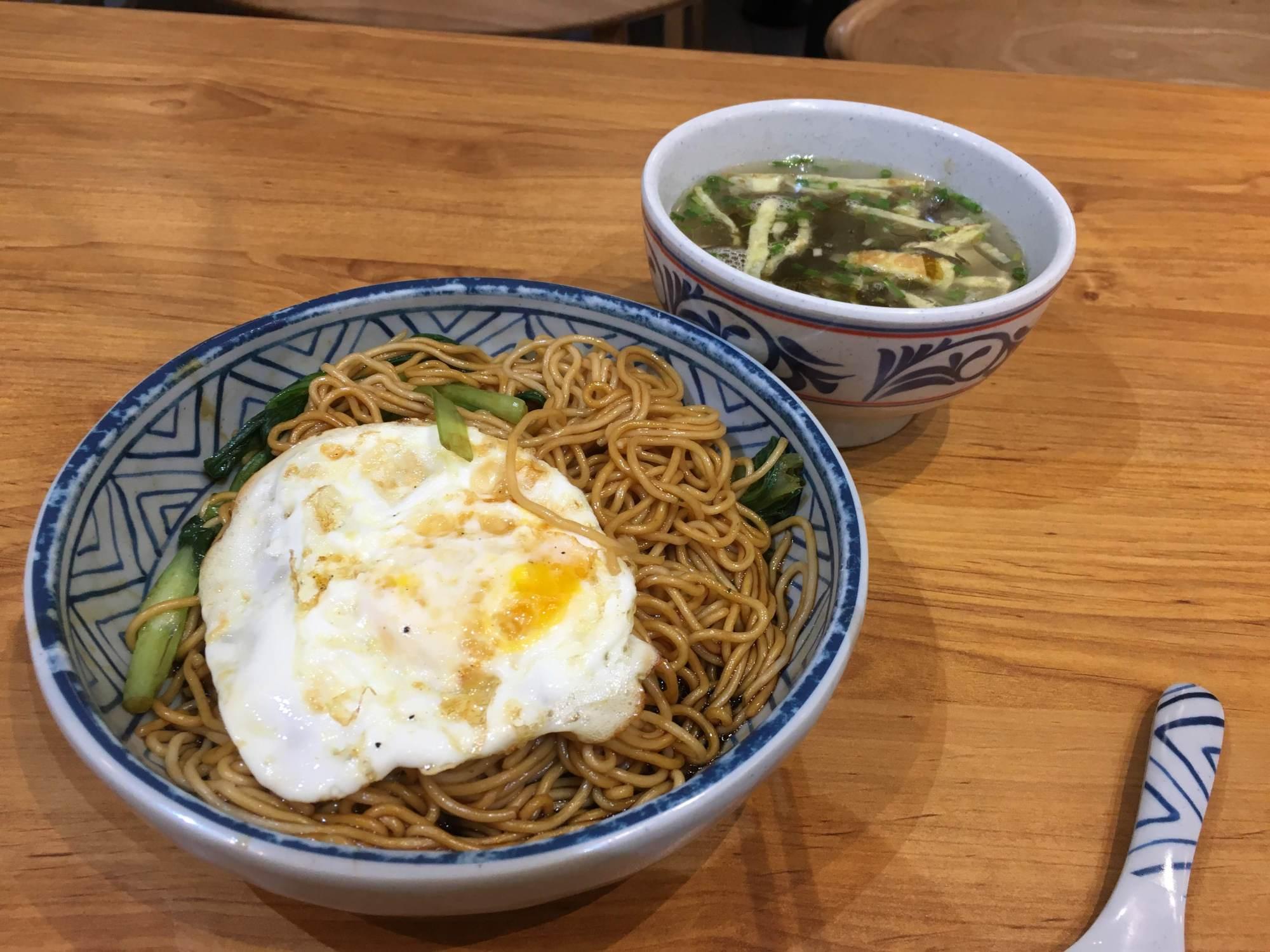

A range of my other favourite vegetarian meals are pictured below:



Eating out had at first seemed like it would be a great linguistic challenge. In two years of Chinese class in the UK I had not learnt the word for many foods, let alone specific dishes. When looking at a menu, the best that I could work out was usually just that a particular dish contained noodles or beef. Wechat translate was also usually far from helpful.

However, this challenge was very quickly overcome due to the prevalence of picture menus and one particular phrase. Ordering food ended up having very Little Britain vibes as we would just point and say, ‘我要这个’ meaning, ‘I want that one’. Studying abroad evokes a romantic idea of speaking the local language 24/7 but truth be told on most days, aside from in my Chinese classes, this was the only sentence I would say (albeit many times). Discussing films, books, politics etc. in class and then resembling Andy Pipkin in real life was the unfortunate reality of my time in China.
Pictured in the previous three photos, with varying levels of aesthetic, is a dish called 番茄炒蛋 – imaginatively translated to tomato and egg. It is a guaranteed vegetarian option at nearly every restaurant and is a staple throughout China, so much so that its recipe was the focus on an entire week of Chinese classes. As a result, it was pretty much the only dish I could actually order without saying 我要这个。
One of my non-vegetarian favourites were Shanghai’s traditional soup dumplings, 小笼包 – much better than the giant crab filled ones that were served with a straw to drink out the filling (picture is unfortunately a victim of the missing memory card but is as ridiculous as it sounds).

Another was a dish that I unfortunately only discovered in my final week in China, during my post-exams trip to -23C Harbin in the far North East of China, was 锅包肉. The dish, pictured below, was the absolute epitome of health, deep fried pork coated in a sweet, syrupy sauce, and I’m ashamed to admit that I ate it 3 times during our 4 day stay. 东北 (North Eastern) cuisine turned out to be my favourite regional cuisine and I was looking forward to trying out some of the restaurants back in Shanghai. Luckily, I’ve also found one in London that I’ll hopefully get to try as soon as lockdown is over!
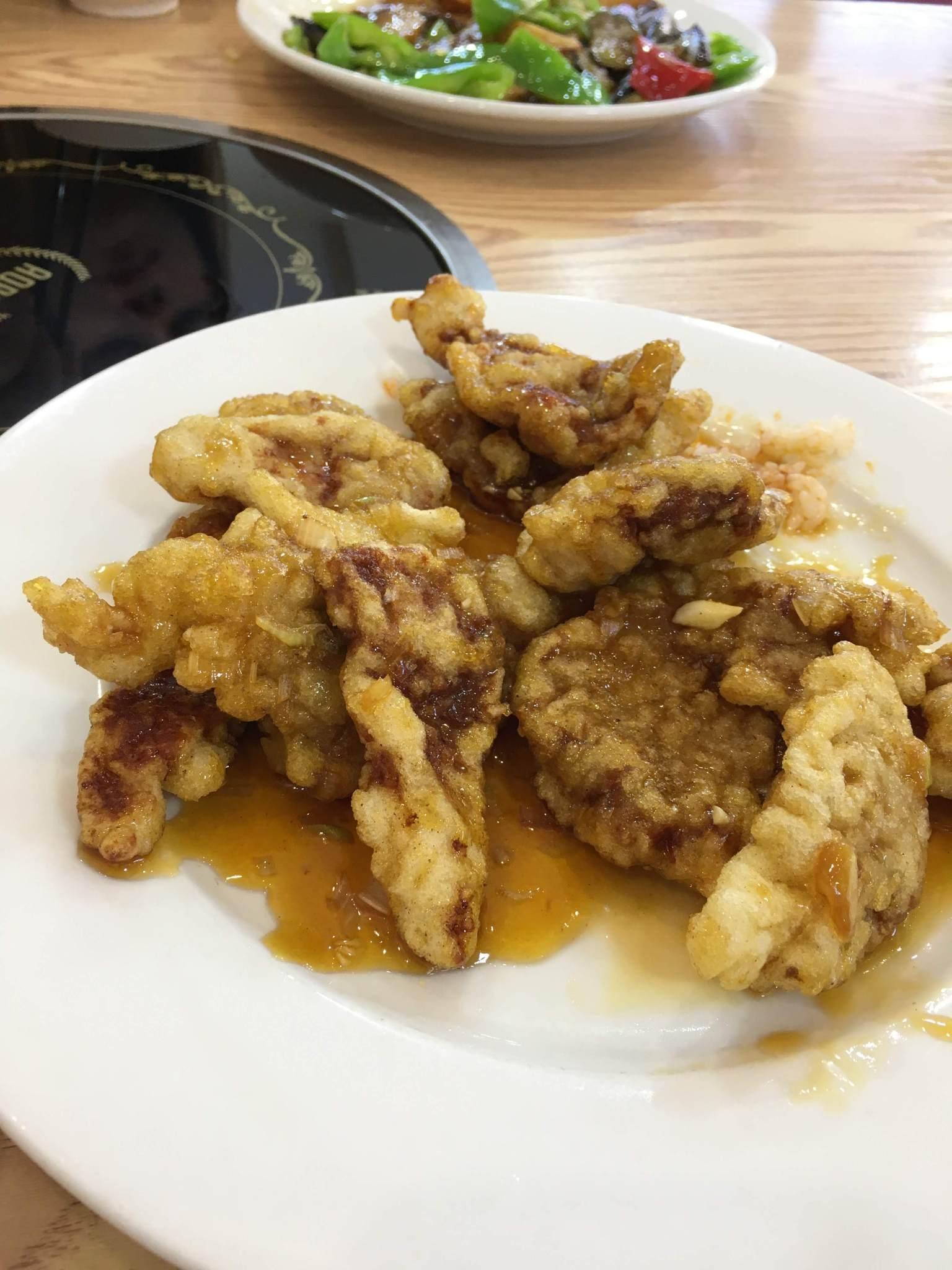
My favourite thing that I ate in China was almost definitely the soup pictured below at the recommendation of my school friend Christina, a Xi’an local who showed us around for the evening. 羊肉泡馍 is a popular Xi’an speciality served at most of the restaurants surrounding the Muslim Street and is like nothing I had eaten before. This is largely because it is a rather interactive experience – diners are initially served a bowl with two large pieces of 泡馍 (a steamed bread) with the instruction to break it into tiny pieces, the smaller the pieces the better the resulting soup. The bowl of bread is then returned to the kitchen where the real magic happens, adding stock, noodles, vegetables and 羊肉 (lamb). The final dish is then garnished with pickles, peanuts and whole garlic cloves.


In fact, most of the food in Xi’an was amazing and was a very refreshing change to the oily noodles I’d been living off for my first three weeks in Shanghai. The Muslim Street in particular was a bustling pedestrian area full of stalls, mostly alternating between selling meat on a stick and yoghurt. As well as also being home to the objectively worst smell I have ever experienced (the source of which is yet to be identified) the meat and yoghurt stalls were interspersed with vendors selling various other snacks as pictured below.


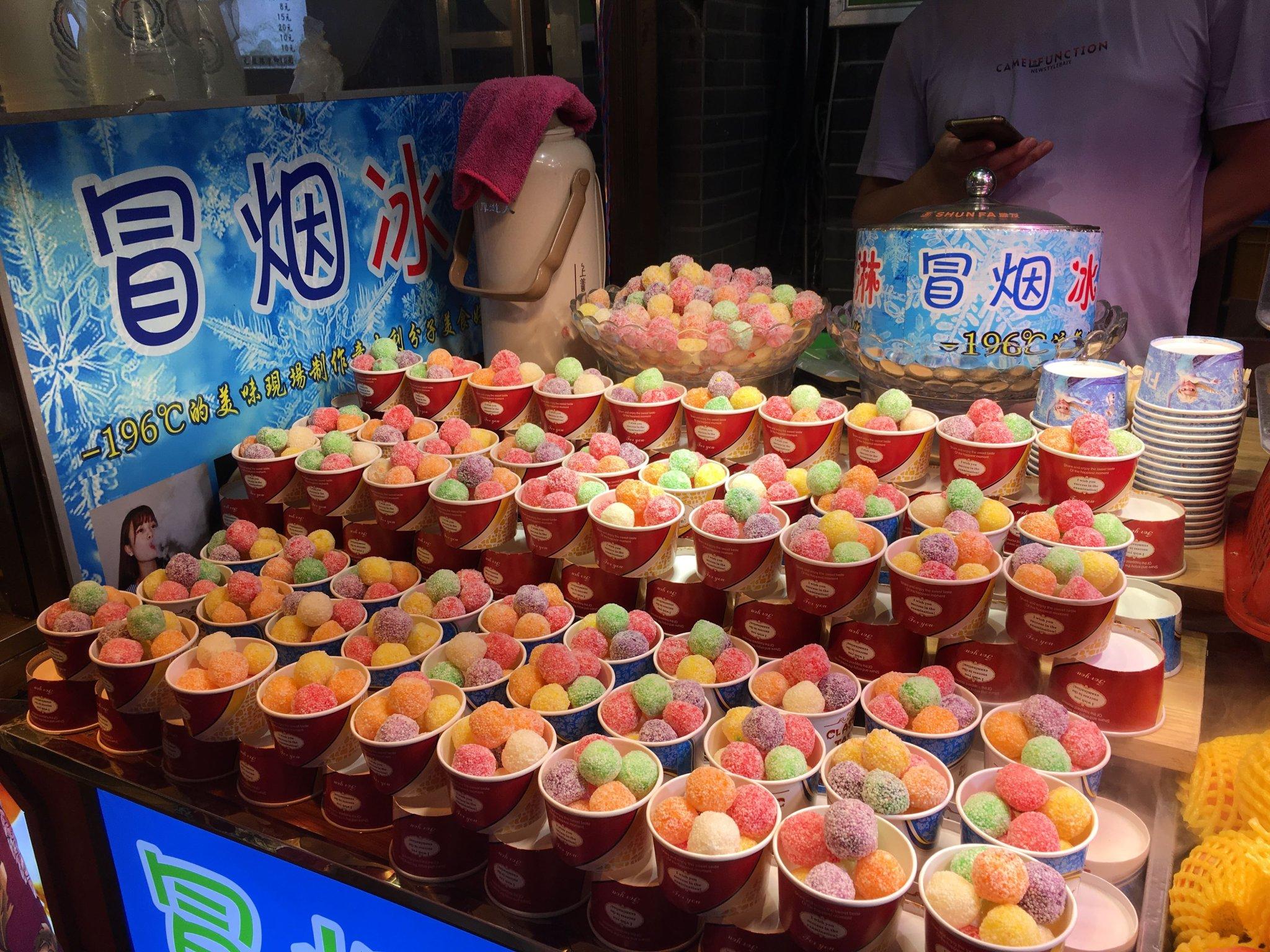

Another Xi’an classic were Biang Biang Noodles often shortened to just BB noodles since their actual name is written using one of the most complicated characters in the Chinese language, consisting of 58 strokes in traditional Chinese and 42 in its simplified form. Unfortunately, my enthusiasm for the dish lies solely in its funky name as I found the beef to be tough and the noodles to lack any particular flavour.

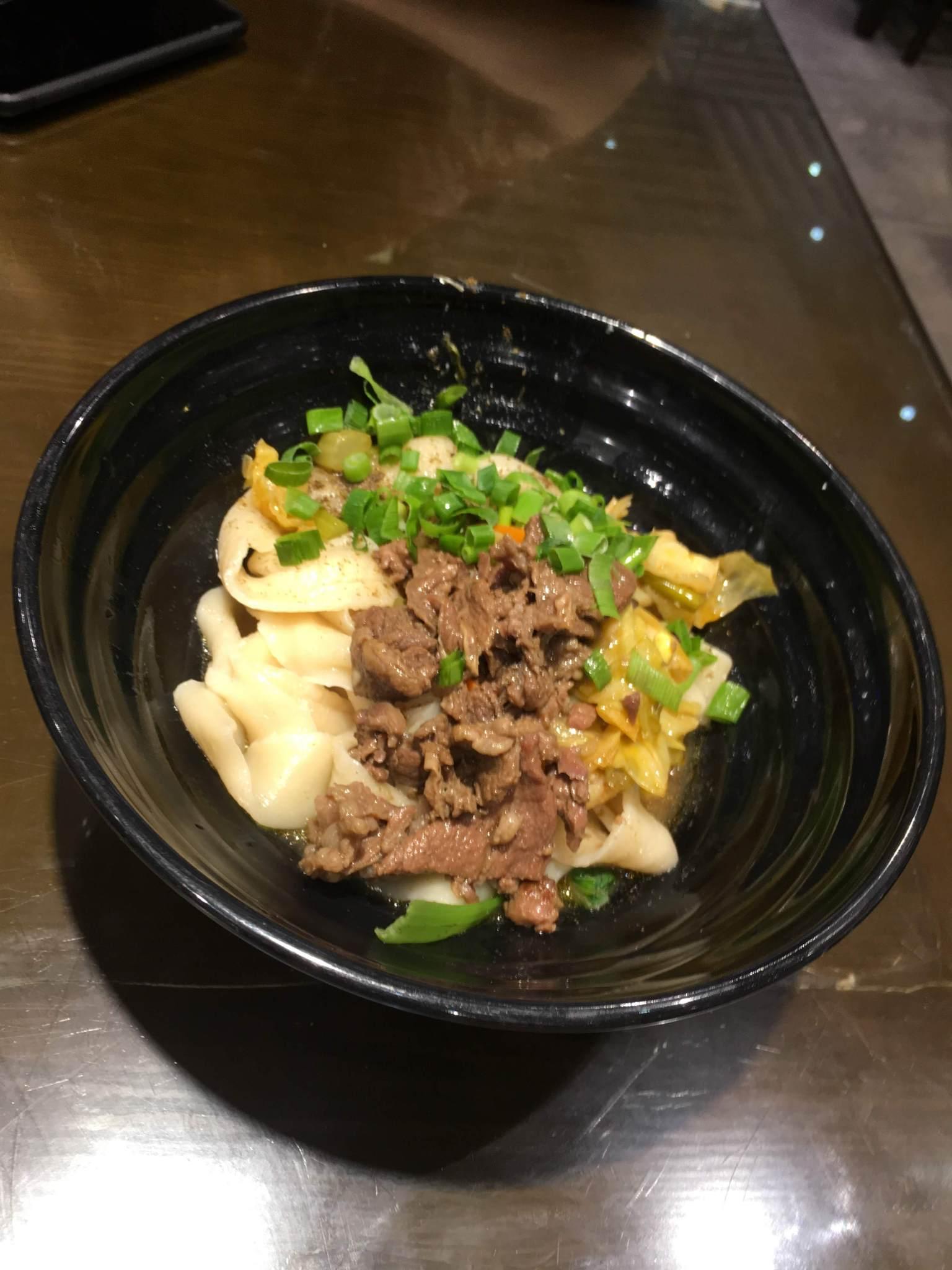
The food in Xi’an was best described as hit or miss but the prevalence of street food was something that Shanghai really lacked and part of the reason that Xi’an is definitely one of my favourite cities in China.
Of course, I also had my fair share of strange meals in China, including ice cold jellyfish in Beijing; a breakfast of rice porridge and dough sticks in Xi’an; cow stomach and tongue courtesy of the family that I tutored for and a 外国人 (foreigner) special of dumplings and ketchup.




Meanwhile Emma was unlucky enough to find a snail floating around in her canteen lunch – definitely more than she had bargained for with her 4 yuan vegan lunch.
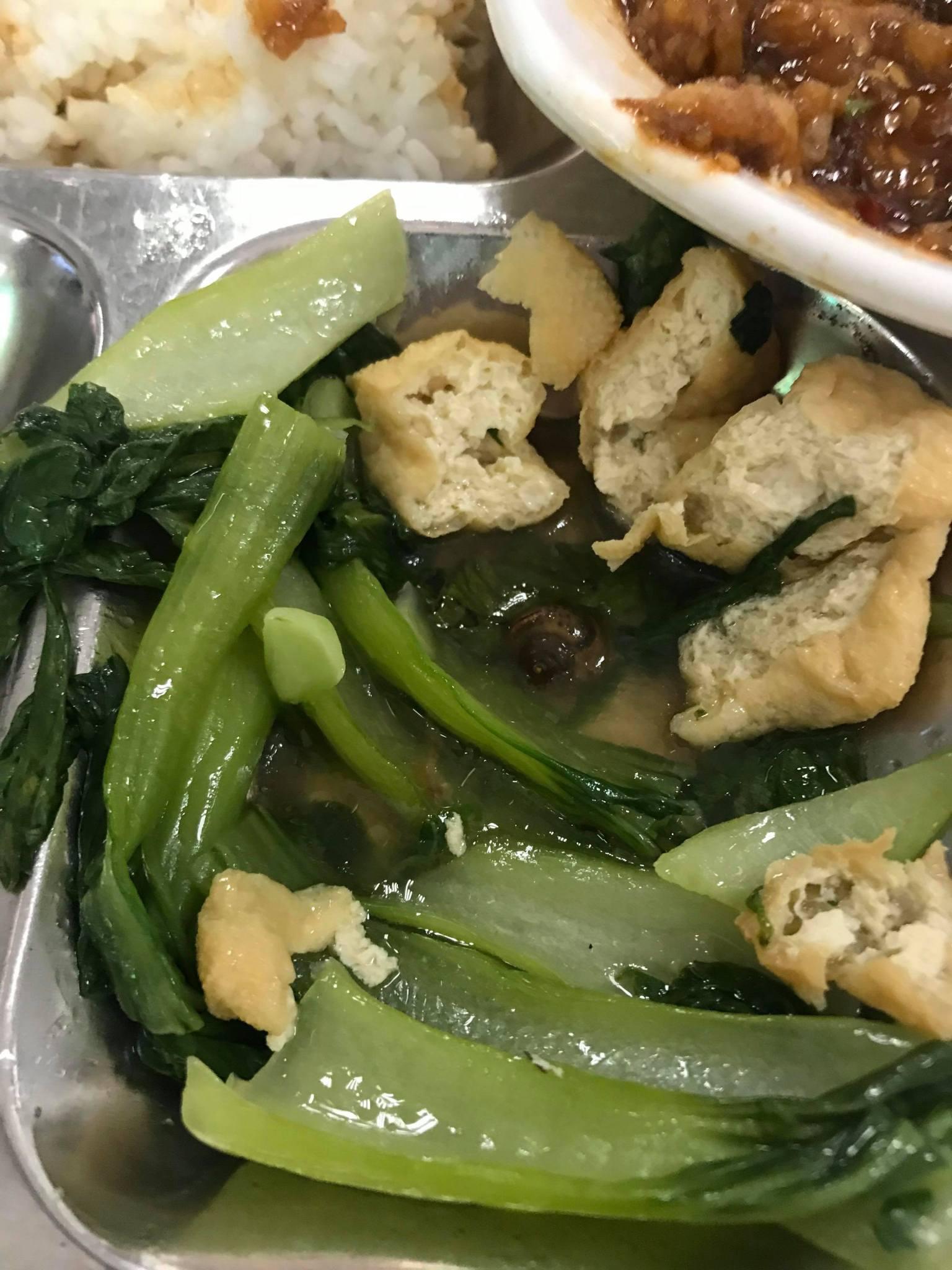
My own worst culinary experience was during our weekend away to Nanjing. Each dish that arrived progressively became the worst thing that we had ever eaten and whilst I unfortunately don’t have a picture of all of them, the worst offenders are pictured below: fish eye dumplings, chicken feet, and a fish/chicken flavoured blancmange/soup hybrid. The fish dumplings were an obvious mistake that shouldn’t have been made in the first place but we all felt cheated by the arrival of both the chicken feet and ‘soup’. We had been particularly hopeful for the ‘soup’ after seeing it on nearly every table, and the family next to us even pouring their leftovers into a plastic bag to take home and finish for dinner – it was obviously a winner with the locals! However, I can only describe it as a fish flavoured blancmange, drenched in oil with a few peas floating around and topped with bright orange grit which could have been mistaken for crushed up wotsits. Honestly, this description really doesn’t do justice to how horrendous it was : -4/10 at a generous push.
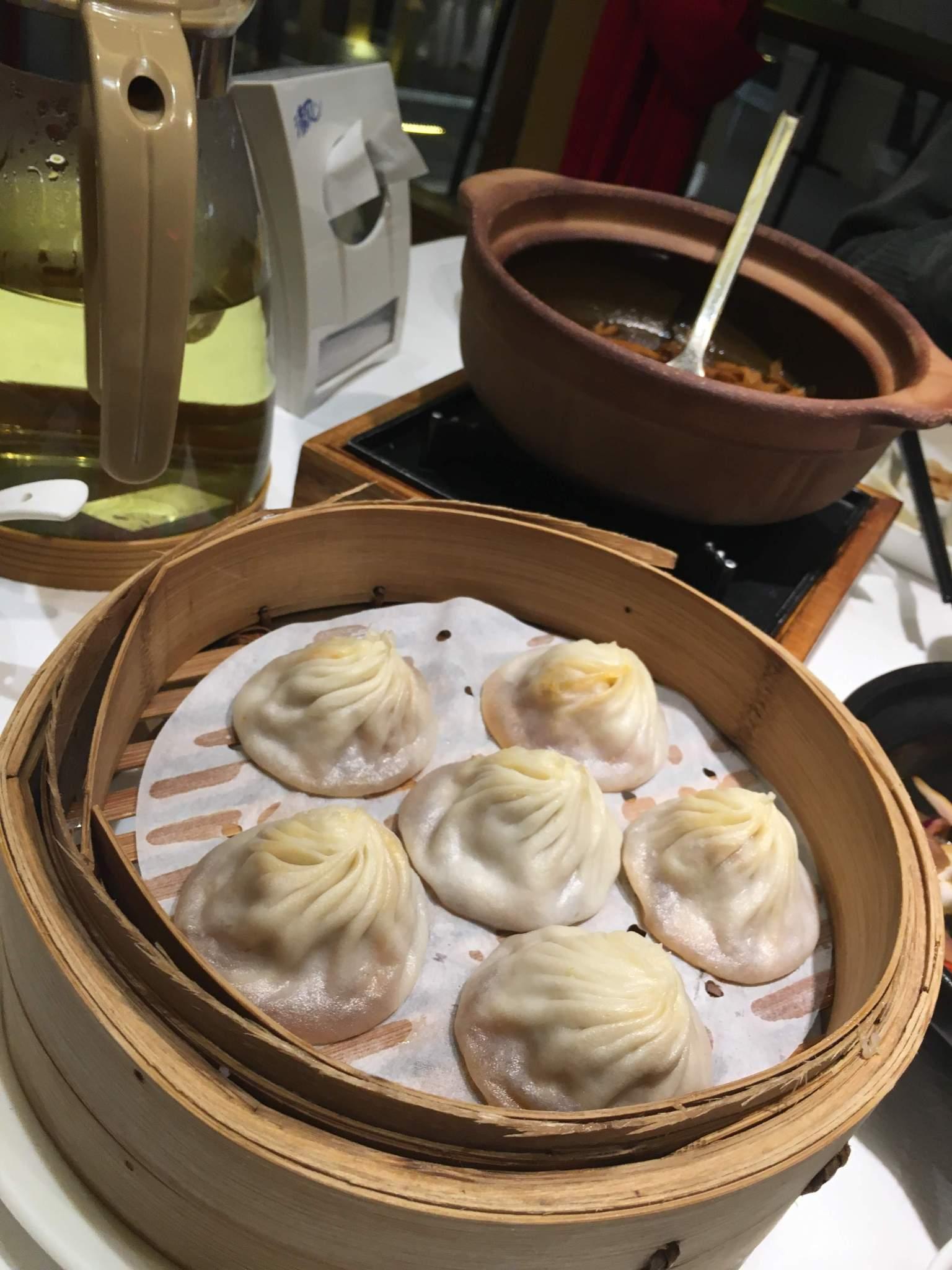

Whilst I SO miss the food in China (mostly) and the freedom to eat out so frequently without breaking the bank (or at all given the current situation) I have enjoyed having a kitchen and the opportunity to cook again. I certainly now have the time on my hands to try to perfect all of my favourite Chinese dishes! (This is yet to happen so far during lockdown but I’m blaming the stockpilers for clearing the shelves of ingredients…)



